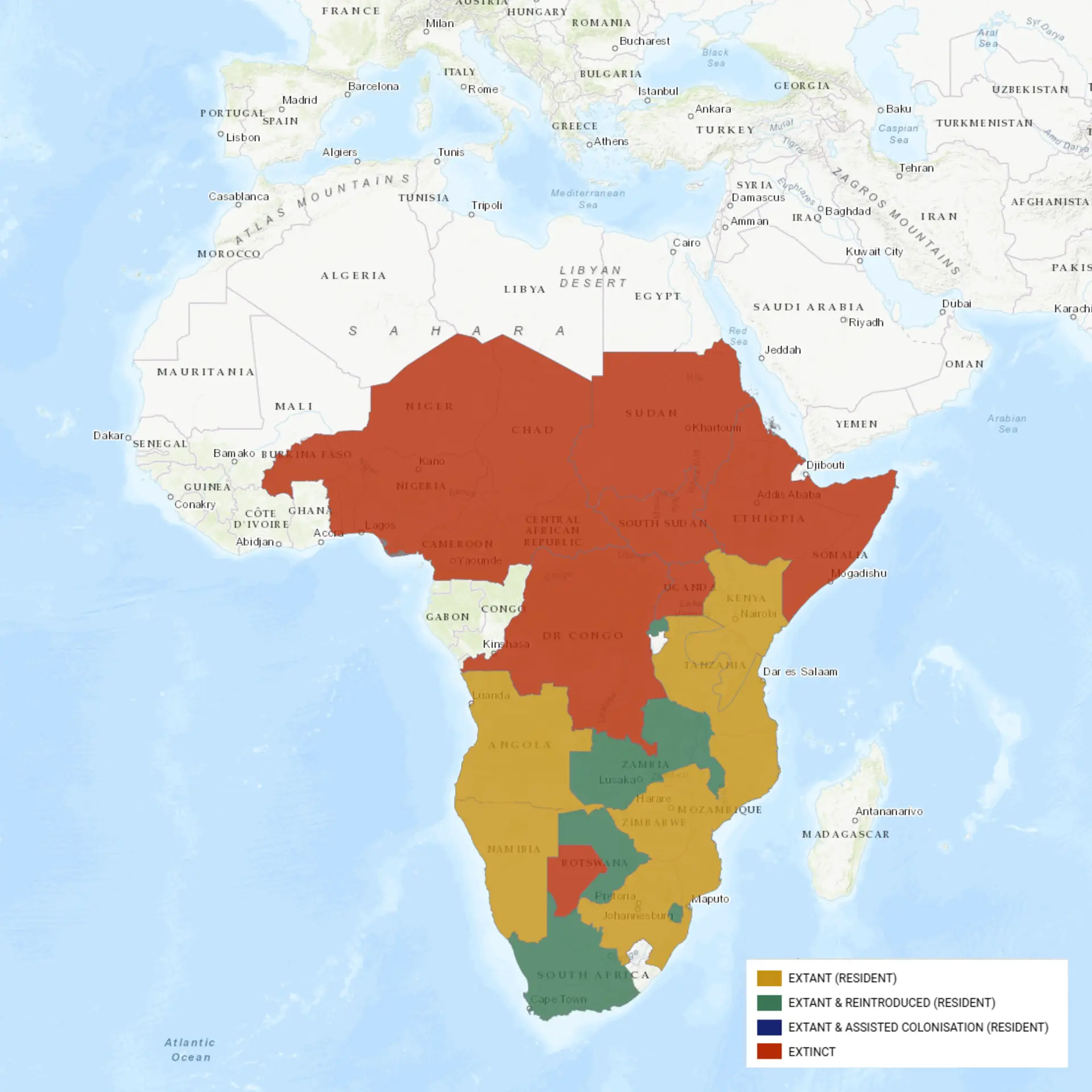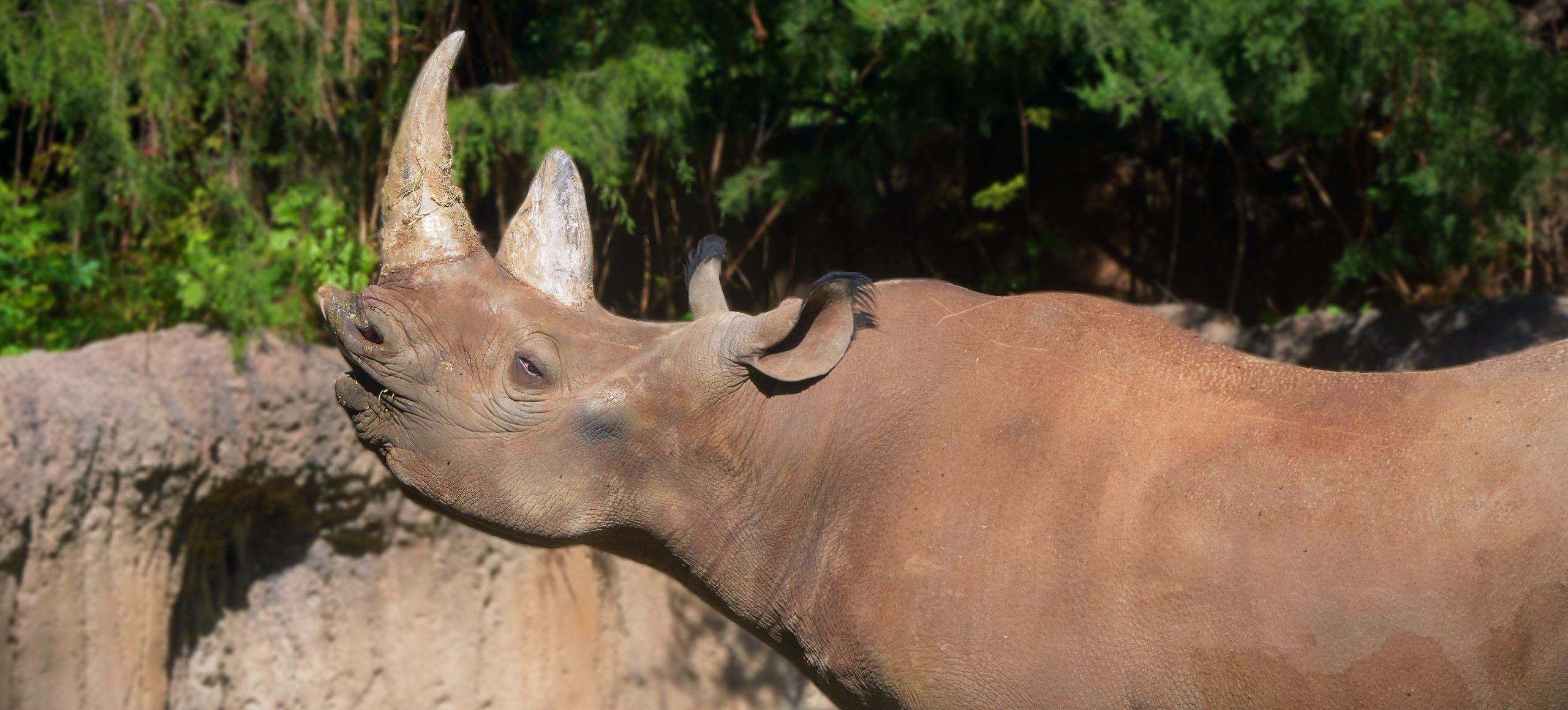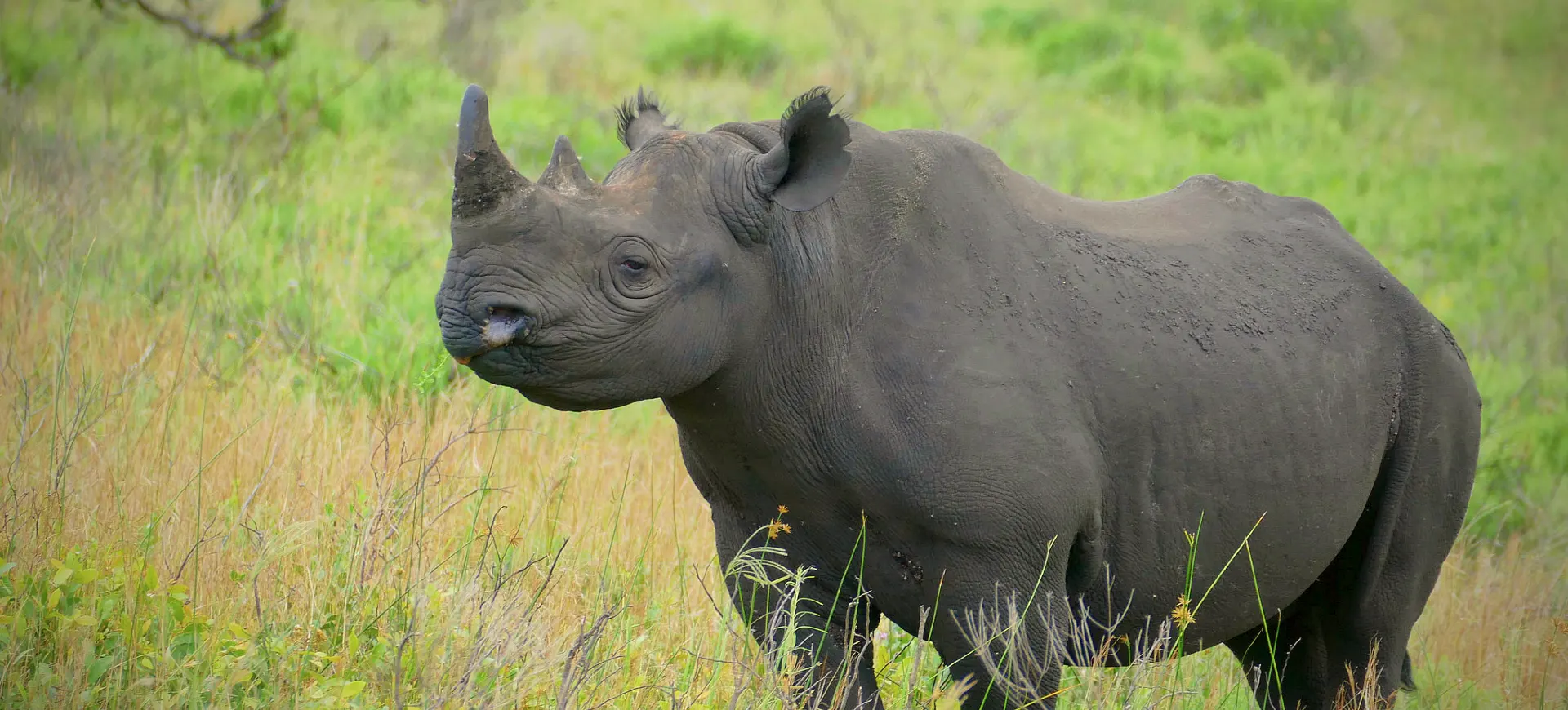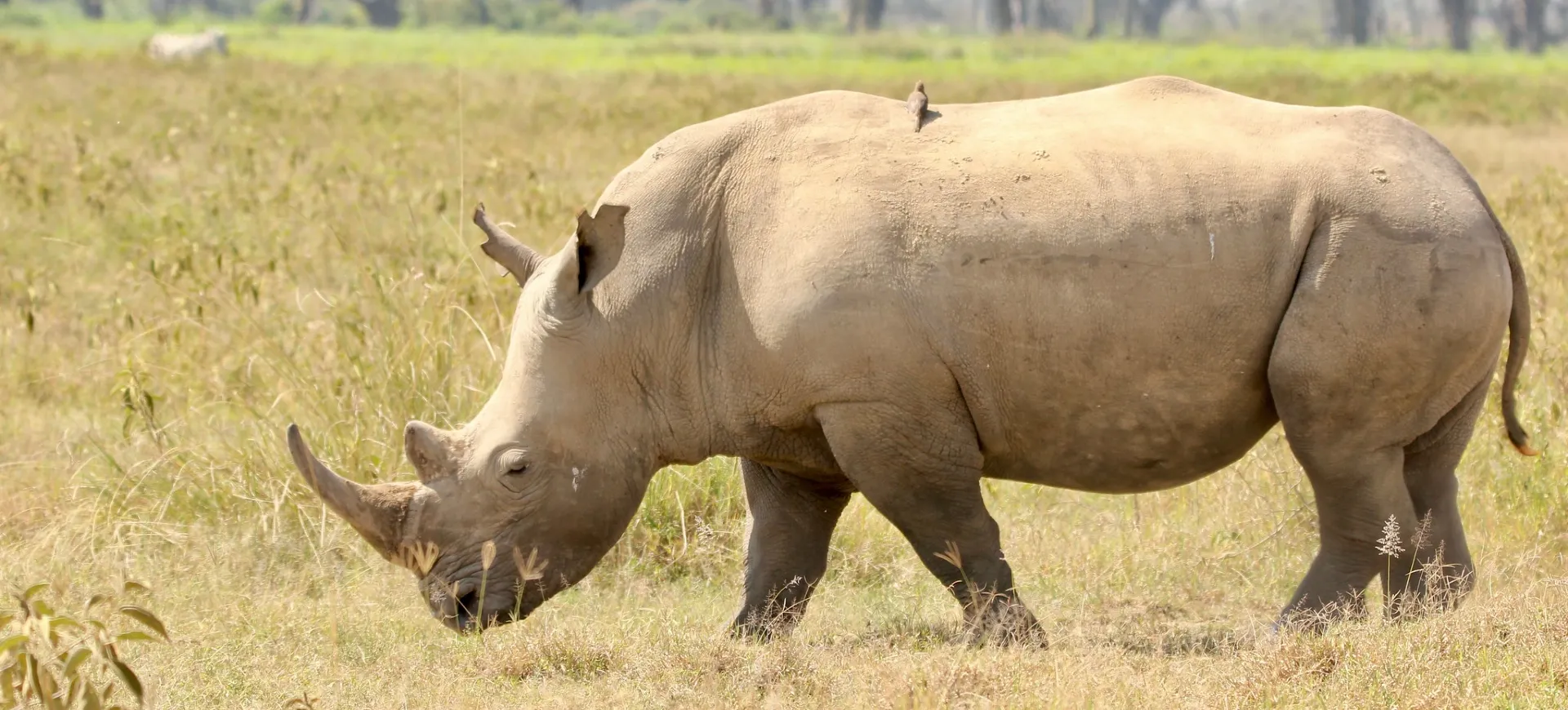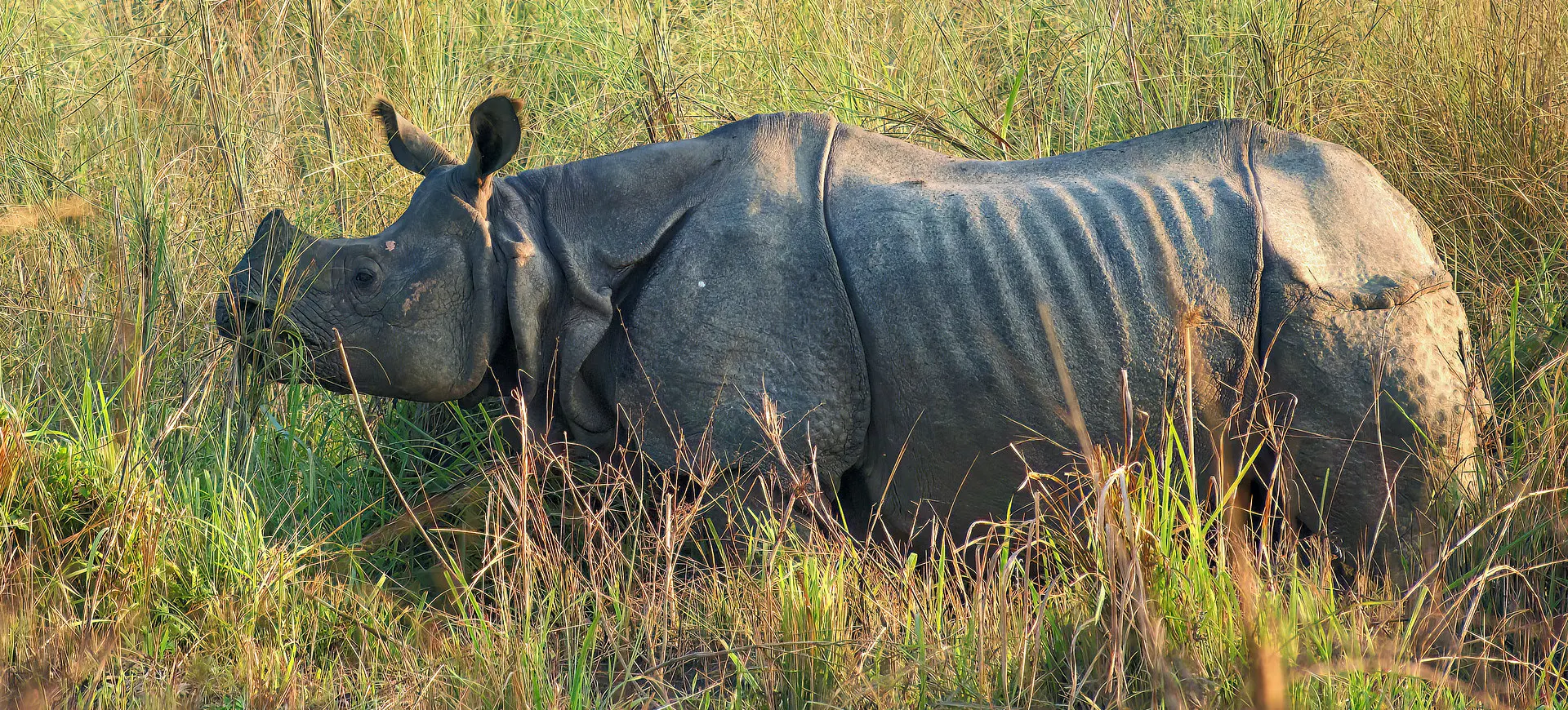Overview
The Black Rhinoceros (Diceros bicornis) is a distinguished member of the Rhinoceros family, characterized by its impressive size and striking features. This creature is one of the two African species of rhinoceros, exhibiting a dark gray, almost black color contrary to its name. The most distinctive features of the Black Rhinoceros are its two horns – the anterior one being substantially longer than the posterior – composed of keratin. Despite its bulkiness, this mammal is known for its agility and speed, with a reputation for its notorious unpredictability and charges when feeling threatened.
The Black Rhinoceros sports a pointed upper lip, which differs from its white rhino counterpart, exhibiting a square lip. This prehensile lip aids in grasping leaves and twigs, which is essential for its browsing feeding method. Another distinctive feature is its lack of front teeth, a trait in all rhinoceros species. Its ears possess a broad rotation range, which allows the rhino to detect sounds from various directions, aiding its otherwise poor eyesight.
The Black Rhinoceros exhibits sexual dimorphism, with females typically larger than males. Younger black rhinos are usually darker in color than adults. The texture of their skin is thick and grooved, essentially serving as natural armor, with three notable skin folds at the legs and neck. Their bodily proportions exhibit a short and sturdy body with a massive head, while their legs are relatively thin compared to their overall body mass.
Taxonomy
Kingdom
Phylum
Class
Order
Family
Genus
Species
Type
Current distribution:
The Black Rhinoceros was once widespread across much of sub-Saharan Africa, but its range has significantly diminished due to poaching and habitat loss. Today, its populations are primarily concentrated in protected areas and national parks in South Africa, Namibia, Kenya, Zimbabwe, and Tanzania. Smaller populations also exist in Botswana, Swaziland, and Zambia. The western black rhino (Diceros bicornis longipes) was declared extinct in 2011 due to poaching and lack of conservation efforts in its range.
Due to intensive conservation measures, the eastern black rhino (Diceros bicornis michaeli) is critically endangered but has stable populations in parts of Kenya and Tanzania. Namibia and South Africa hold the largest populations of the southern black rhino (Diceros bicornis bicornis), with many individuals living in private reserves and conservancies. The species is absent from much of its historical range, particularly in West Africa, where it has been completely extirpated. Reintroduction programs are underway to establish new populations in areas where black rhinos have been lost.
Physical Description:
The Black Rhinoceros is an impressive creature of significant size and structure. They have a massive head with two characteristic horns of tightly compacted hair-like fibers. The front horn is usually longer, typically measuring 50 cm but can reach up to 140 cm. The smaller posterior horn measures approximately 50 cm in length. Their skin color ranges from brown to gray and is noted for its thickness, acting as armor. The skin is also marked by natural tubercles and ridges, particularly around the neck area, adding to the rhino’s distinct rugged appearance.
In terms of body structure, the Black Rhinoceros possesses a short and stout body with a broad chest. The creature’s legs are proportionately slender compared to its large body and end in three-toed feet. The rhino’s ears are sharp and alert, capable of a wide range of rotation for sound detection. They have small eyes on either side of their narrow and elongated skull. As a grazer, the Black Rhino possesses a pointed lip for browsing foliage, which sets it apart from the white rhino, which has a broad lip for grazing grass.

Lifespan: Wild: ~35 Years || Captivity: ~45 Years

Weight: Male: 2425-2987 lbs (1100-1354 kg) || Female: 1543-3696 lbs (700-1677 kg)

Length: Male: 118-150 in (300-380 cm) || Female: 114-142 in (290-360 cm)

Height: Male: 55-71 in (140-180 cm) || Female: 57-69 in (145-175 cm)

Top Speed: 34 mph (55 km/h)
Characteristic:
Native Habitat:
The Black Rhinoceros once roamed widely across the savannas and grasslands of Africa, stretching from South Africa to Ethiopia and west to Senegal. They inhabit various environments, including open plains, thickets, woodland, wetlands, semi-desert, and mountainous terrains. Their adaptable nature allows them to thrive in various habitats, provided there is abundant food and water.
Black Rhinos are solitary creatures, typically found in regions with dense, woody vegetation, which provides cover and food. Males typically establish a territory marked by urine and feces, which can span over several kilometers. On the other hand, females do not have fixed territories, but they do have home ranges that often overlap with those of other females.
Biomes:
Biogeographical Realms:
Continents:
Diet:
Diet & Feeding Habits:
Black Rhinoceroses are typically browsers with a diet consisting primarily of leaves, branches, shoots, thorny wood bushes, and fruit. The rhino’s prehensile upper lip enables it to feed on trees and bushes in the mornings and evenings when temperatures are lower. Black Rhinos particularly like the twigs and branches of the acacia species, a thorny plant widespread across their habitat.
Despite its size, the Black Rhinoceros does not need to consume vast amounts of food compared to other herbivores. However, they require a constant water supply and thus stay near a water source. In instances where water is scarce, such as during droughts, the Black Rhinoceros can survive on the moisture obtained from its diet. The rhino’s digestive system allows it to extract maximum nutrition from its food, enabling survival in harsh and arid conditions.
Mating Behavior:
Mating Description:
The mating habits of the Black Rhinoceros involve complex behaviors. They are primarily solitary animals except during mating and when the female raises her young. The courtship period between a male and a female rhino is relatively short, often consisting of the male following the female and attempting to court her with various displays. This includes nuzzling, gentle biting, and snorting.
Males fight for female access during the breeding season, using their sizeable horns as weapons. These confrontations can lead to severe injuries and even death. After mating, the female has a gestation period of about 15-16 months. Typically, a single calf is born, which stays with the mother for about 2-3 years before it becomes independent. A female will usually reproduce every two and a half to five years.
Reproduction Season:
Birth Type:
Pregnancy Duration:
Female Name:
Male Name:
Baby Name:
Social Structure Description:
Black rhinoceroses are solitary animals, with individuals maintaining distinct home ranges that often overlap with those of other rhinos. Males are territorial and mark their ranges with dung piles, urine sprays, and horn scrapes on trees. While females are less territorial, they also maintain home ranges that overlap with their offspring and other females. Social interactions are rare outside of mating, although mothers and calves maintain strong bonds until the calf becomes independent.
Black rhinos communicate through vocalizations, body language, and scent marking. They produce a range of sounds, including grunts, snorts, and bellows, to express alarm or assert dominance. Despite their solitary nature, black rhinos play a critical role in shaping their ecosystem by influencing vegetation patterns and creating pathways other animals use. Their solitary habits and unpredictable behavior make it challenging for them to study in the wild.
Groups:
Conservation Status:
Population Trend:
Black rhinoceros populations have experienced catastrophic declines over the past century due to poaching and habitat loss, with numbers plummeting by over 95% since the 1960s. Their population has begun to recover in recent decades thanks to intensive conservation efforts, including anti-poaching patrols, habitat protection, and captive breeding programs. However, the species remains critically endangered, with fragmented populations highly vulnerable to poaching and environmental changes. Namibia, South Africa, and Kenya hold most of the world’s black rhinos, and these countries have implemented some of the most successful conservation programs.
Captive populations in zoos and reserves play a vital role in preserving genetic diversity and raising awareness about the species. Black rhinos are often part of species survival programs, which aim to reintroduce individuals into the wild to bolster existing populations. Despite these successes, the demand for rhino horn in illegal markets threatens their recovery. Continued funding, enforcement, and collaboration between governments and conservation organizations are essential to ensure the long-term survival of this iconic species.
Population Threats:
Poaching remains the single greatest threat to black rhinoceros populations, driven by the high demand for rhino horn in traditional medicine and as a status symbol in parts of Asia. Habitat loss due to agricultural expansion, urban development, and mining further exacerbates the species’ decline by reducing the availability of suitable habitats. Climate change poses an additional threat, as it alters rainfall patterns and impacts the vegetation that rhinos depend on for food. Fragmentation of their range increases the risk of inbreeding and limits the ability of populations to recover naturally.
Human-wildlife conflict is another concern, particularly in areas where rhinos compete with livestock for resources or damage crops. Political instability in some regions also hampers conservation efforts, making it difficult to enforce anti-poaching measures. Disease and drought can also have localized impacts on rhino populations, especially in smaller or isolated reserves. Without continued conservation efforts, the black rhino remains at high risk of extinction in the wild.
Conservation Efforts:
Anti-poaching measures, including armed patrols, surveillance technology, and rhino horn dehorning programs, have been critical in reducing the illegal hunting of black rhinos. Protected areas such as national parks and private conservancies provide secure habitats where rhino populations can recover. Captive breeding programs and translocation projects have been instrumental in reintroducing black rhinos to areas where they were previously extirpated. International regulations, such as listing rhino products under CITES Appendix I, help combat the illegal trade in rhino horn.
Community-based conservation initiatives, such as ecotourism, provide local communities with economic incentives to protect rhinos and their habitats. Organizations like the International Rhino Foundation and Save the Rhino International work to raise awareness, secure funding, and implement effective conservation strategies. Genetic studies and research into rhino behavior also help ensure long-term population health and diversity. Despite these efforts, continued vigilance is necessary to address emerging threats and maintain progress in black rhino conservation.
Additional Resources:
Fun Facts
- The Black Rhinoceros can sleep standing up or lying down and tends to sleep during the hottest parts of the day.
- They have poor eyesight but excellent senses of smell and hearing.
- Despite its size, a Black Rhino can reach speeds up to 34 mph (55 km/h).
- Black Rhinos are known for their aggressive nature and have been observed charging at trees and rocks, seemingly unprovoked.
- The longest known horn of a Black Rhino measured nearly 5 feet (1.5 meters) in length.
- Black Rhinos have a symbiotic relationship with oxpeckers, birds that feed on ticks found on the rhino’s skin.
- Black Rhinos can live without water for up to five days.
- The gestation period of a Black Rhino is 15-16 months, one of the longest of any mammal.
- Black Rhinos have a habit of spraying urine as a way to communicate their presence to other rhinos.
- Despite their name, Black Rhinos are not black but are usually grey or brown in color.


